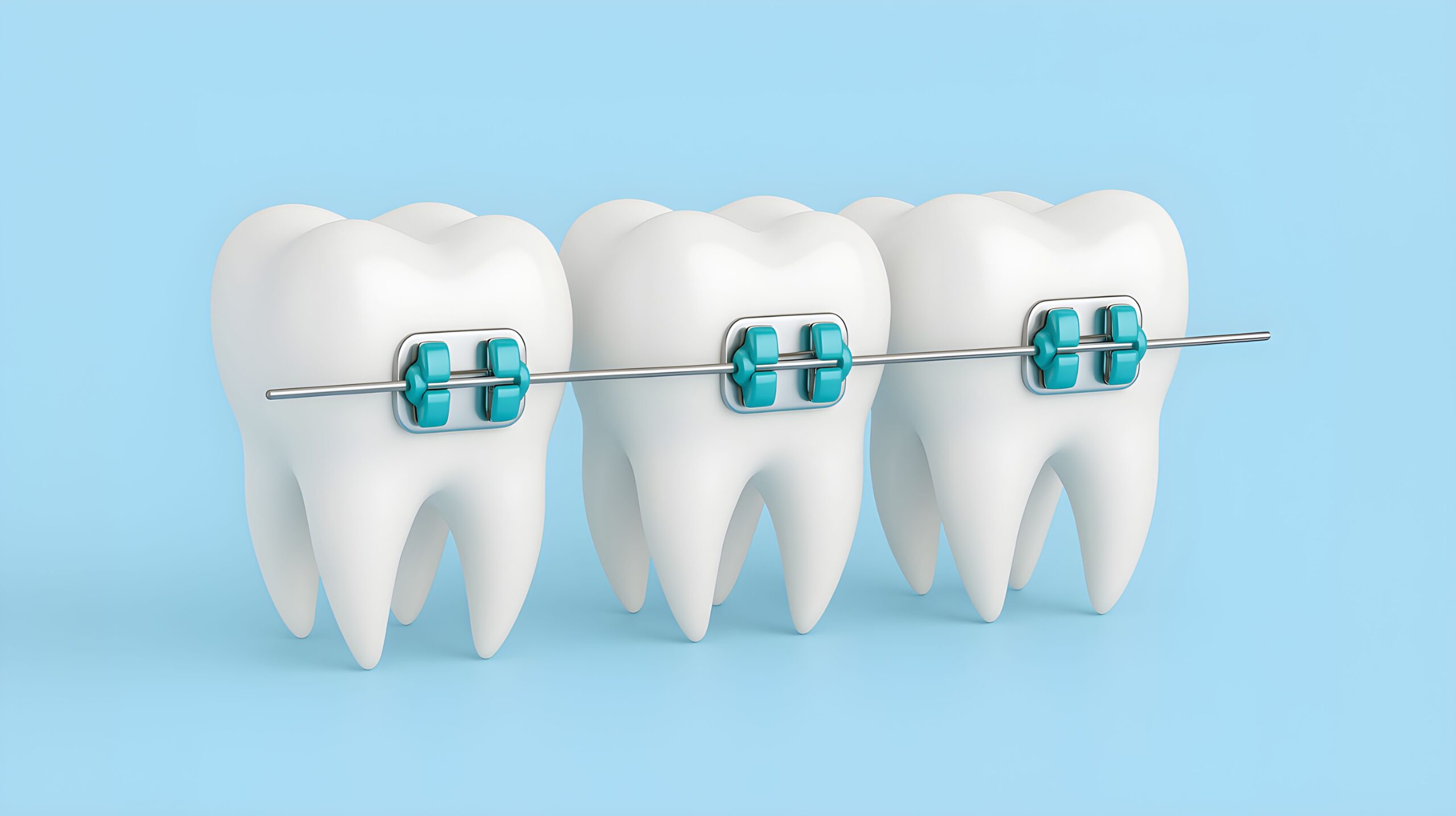Parents do all they can to make sure their children are happy and healthy. Between school, soccer practice, and other activities, it seems like parents are always on the go. Then there are regular doctor appointments and dentist appointments to keep on top of. But what about other specialists, such as an orthodontist in Vancouver?
Is it really necessary to schedule an orthodontist appointment in Surrey for your child when they already see their family dentist?
What’s the difference between a paediatric orthodontist and a general orthodontist? When should your child see an orthodontist for the first time?
How do I know if my child needs orthodontic care?
With so much scheduling and information to keep track of, even when it comes to one aspect of your child’s health, such as their oral health, it’s easy to get overwhelmed. And with so many different terms flying around within the field of dentistry, it can be easy to get confused. Dentists and orthodontists share a similar goal – to ensure your child develops strong, healthy teeth and gums. So again, what’s the difference?
In this post, we’re going to discuss the major differences between dentistry, general orthodontics, and paediatric orthodontics. Does your child need to see an orthodontist? When should you schedule their first appointment? How will you know if your child needs orthodontic care? We’re going to answer these questions and more.
Dentistry vs. Orthodontics
Family Dentist
You’ve probably been taking your child to see a dentist since their first teeth started erupting. Regular dentist appointments are important for your child’s overall oral health. Dentists complete a general dental degree and cover a broad range of issues including cavities, tooth decay, and gum disease. Dentists don’t put on braces or do other types of alignment treatment. If your child needs orthodontic treatment, your family dentist might recommend they see an orthodontist.
Orthodontist
After completing their degree in dentistry, orthodontists go on to complete a specialist degree in orthodontics. While dentists care for a patient’s overall oral health, an orthodontist specializes in dental development, facial growth, and tooth and jaw alignment. An orthodontist can offer types of treatment such as braces, retainers, or Invisalign. These treatments can provide solutions for orthodontic issues such as crooked or overcrowded teeth, along with several misaligned bites such as a crossbite, overbite, underbite, or open bite.
So, now that we know the difference between an orthodontist and your family dentist, let’s go one step further. What’s the difference between a paediatric orthodontist and a general orthodontist? Does it matter?
Pediatric Orthodontist
As the name suggests, the main difference between a general orthodontist and a paediatric orthodontist is that the latter specializes in orthodontic care for children and adolescents. So why does this matter? Here are a few things that make a paediatric orthodontist different from a general orthodontist:
Education
Paediatric orthodontists have achieved a high level of education. Not only have they completed an extra few years of specialized education in orthodontics on top of their degree in dentistry, but paediatric orthodontists also have extra training in paediatric care. This helps them to understand how to manage a child’s behaviour and possible anxiety during checkups.
Specialized Care
Children’s teeth are not the same as adults. A child’s mouth is still growing and developing. Early orthodontic care is sometimes called “interceptive orthodontics” because, when caught early, treatment for orthodontic issues in Vancouver will likely be much more simple. When left untreated, more serious problems with the teeth and jaw can develop. Paediatric orthodontists are better equipped to handle the unique needs of children and early adolescents.
Different Treatment Options
Paediatric orthodontists often have access to the latest treatment options and technologies. Since they are used to working with children and teenagers, they know that your child might prefer a more comfortable and less invasive option.
Some treatment options that paediatric orthodontists use to treat your child include:
Clear Braces
Clear ceramic braces are less noticeable than metal braces, which might be important to your teen if they are less than thrilled about their new hardware. They might be more comfortable for your teenager’s developing mouth.
Invisalign
As the name suggests, Invisalign is a clear aligning treatment that is almost invisible. This is a popular choice for some adolescents.
Lingual Braces
Lingual braces are placed on the back of the teeth. While there are some specific teeth conditions where lingual braces should be avoided, they are often a great option for children or adolescents, since they are hidden from view behind the teeth.
Retainer
A retainer is an orthodontic device custom-made to fit your child’s teeth to keep them in place. Some retainers are worn after braces to retain the new position of the teeth, and some retainers don’t require braces and help shift the teeth to a better position. Retainers are usually made from metal wires or plastic.
Better Experience for Your Child
As we’ve mentioned, a paediatric orthodontist is experienced in working specifically with children and adolescents. This means that your paediatric orthodontist will be better suited to deal with the many personalities a child might display upon visiting an orthodontic clinic. Your child might be nervous about their appointment or your teenager might be moody about receiving a treatment such as braces.
You’ll want to choose an orthodontist who is friendly and patient, and who communicates with both the child and parent. You don’t want to feel rushed at your visits and you don’t want your child to feel scared. A paediatric clinic might even be more visually stimulating and fun for a child. Seeing a paediatric orthodontist in Surrey as opposed to a general orthodontist can make for a more positive experience for everyone involved.
Now we understand the difference between a dentist and an orthodontist and have gone even further to understand the difference between a general orthodontist and a paediatric orthodontist. So let’s ask the big question that every parent wants to know:
Does My Child Need to See an Orthodontist?
Let’s start with the short answer. Yes, your child should visit an orthodontist. But why? What if you don’t think your child needs orthodontic care?
Looking at your child’s teeth, you might think they appear straight and unproblematic and therefore your child doesn’t need orthodontic care. This could indeed be the case, but the fact is that children’s teeth develop in a wide disparity. This means your child’s teeth can develop very differently from the next child, and so on.
It can take an expert to notice if the teeth are indeed developing normally, or if any orthodontic issues are present that will likely need treatment. Also, an orthodontist doesn’t just look out for issues with the teeth, but also the alignment of the jaw and even facial structure. A parent may not always see an issue with the development of the jaw but an orthodontist will be able to spot a problem.
Soon we’ll go into more detail about the benefits and phases of early treatment. But before we do that, let’s answer another common question.
At What Age Should My Child See an Orthodontist for the First Time?
The Canadian Association of Orthodontists recommends that children see an orthodontist as early as age seven. At this age, most children have a mix of primary and permanent teeth. This makes it easier for a paediatric orthodontist to diagnose and correct any issues with the teeth or jaw and allows for early treatment when necessary.
Let’s quickly discuss the benefits of early treatment. As with most issues, when caught early, orthodontic issues are simpler to treat. Teeth grow and develop rapidly throughout childhood and adolescence. When left untreated, some orthodontic issues might later require surgery or tooth extractions.
There are a few phases in orthodontic treatment. Let’s quickly go over them.
Phase One – The Planning Stage
Before receiving treatment, your orthodontist will need to diagnose any issues and come up with a treatment plan for your child. Phase one will include your initial consultation where your paediatric orthodontist will check on the health of the teeth and gums and alignment of the teeth and jaw.
The orthodontist will examine your child’s teeth either with X-rays or special digital scanners to gather information and come up with a specialized treatment plan. This is a good time to come prepared with any questions or concerns you or your child may have. You might even have a teenager who is hesitant to wear braces or receive treatment and this is a good time to help them prepare for braces.
Phase Two – The Active Treatment Phase
Once a diagnosis has been made, it’s time for treatment! Your orthodontist will apply your child’s braces. The type and length of treatment will depend on your child’s specific case. Your child’s teeth might feel sore within a couple of hours of receiving braces, so it’s a good idea to have some pain relief available just in case.
Your orthodontist will discuss how to care for your child’s teeth with braces including how to brush and floss, and what foods your child can and cannot eat. During active treatment you’ll need to visit the clinic with your child regularly to have the braces adjusted, to keep the teeth moving into the desired position.
Phase Three – Post-Treatment or Retention Phase
Once the teeth have been correctly aligned, your child’s braces will be removed. Your child will then be provided with a custom-fit retainer to wear. Wearing a retainer ensures that the teeth don’t shift back to their original positions. Your child will need to wear their retainer for a certain number of hours per day, for a specified period (usually a few months).
Depending on your child’s case, a retainer might need to be worn full-time for a few months, and then overnight after that. Patients will continue to see their orthodontist for regular checkups, to ensure the teeth are still in the correct place and that the retainer still fits.
Before we wrap up, let’s reiterate – regardless of whether or not you think your child needs orthodontic care, your child should still visit a paediatric orthodontist for the first time around the age of seven. Your dentist might also refer your child to an orthodontist if he or she feels that your child needs orthodontic treatment. However, you might notice that your child is developing orthodontic issues. So, let’s answer a few final questions.
How Do I Know if My Child Needs Orthodontic Treatment?
Here are some signs you should look out for:
-You notice abnormalities in your child’s teeth such as overcrowded teeth, crooked teeth, or several different bites. Orthodontists treat overbites, underbites, crossbites, or open bites.
-Your child has speech difficulties such as difficulty pronouncing words or slurring words. The alignment of the jaw affects speech and difficulty speaking might be a sign of an orthodontic issue.
-Your child is a mouth breather. This can cause several complications in a child’s developing mouth.
-Your child loses their baby teeth very early or very late. While children lose their teeth on their schedule, typically they lose the first tooth around the age of five or six and should lose all of their baby teeth by age 12 or 13.
-Your child has difficulty eating. Your child shouldn’t be in pain while chewing and this could be a sign of a misaligned jaw or issues with the teeth. If you notice your child is avoiding food or in pain while eating, this could be an orthodontic issue.
-Your child was a thumb sucker. This can affect the developing teeth.
Scheduling an orthodontic appointment for your child can be overwhelming and choosing the right orthodontist can be tricky. Scheduling an initial consultation with a paediatric orthodontist can help determine whether or not your child’s teeth and jaws are in good shape and provide them with treatment if necessary.
We’ve covered a lot in this post, but you might still have questions or concerns about your child’s orthodontic care. Our team at PacificWest Dental is committed to achieving the highest level of patient health. Please don’t hesitate to contact our office today.

Hello! I’m Dr. Kevin Lee, a certified orthodontic specialist at PacificWest Dental Group, proudly serving the vibrant communities of Vancouver and Surrey. My journey into orthodontics began back in high school. As a teenager wearing braces, I became fascinated by the intricate blend of art, engineering, and biology that defines this field. This early experience ignited a passion that has guided me throughout my career.
I pursued my academic journey at the University of British Columbia (UBC), where I earned a Bachelor of Science in Biochemistry in 2006, followed by a Doctor of Dental Medicine in 2011. After a year-long residency at Montefiore Medical Center in New York, I returned to UBC to complete a combined Master of Science in Craniofacial Biology and a Diploma in Orthodontics in 2015. That same year, I achieved certification from both the Royal College of Dentists of Canada and the American Board of Orthodontics.
With over a decade of clinical experience, I remain deeply committed to staying at the forefront of orthodontic advancements. At PacificWest Dental Group, we prioritize personalized treatment plans tailored to each patient’s unique needs, ensuring comfort and care every step of the way. Our goal is to help you achieve the smile you’ve always dreamed of in a welcoming and supportive environment.
Outside the clinic, I enjoy engaging with our community and staying active. Whether it’s through local events or outdoor activities, I believe in building strong relationships both inside and outside the office. I look forward to meeting you and working together to create a beautiful, confident smile.
Services we provide:
-Invisalign
-Braces
-Lingual Braces
-Digital treatment planning
-TMJ and headpain treatment
-Laser Therapy
-Sleep Apnea Oral Appliance
-Dysport Cosmetic Injectables










